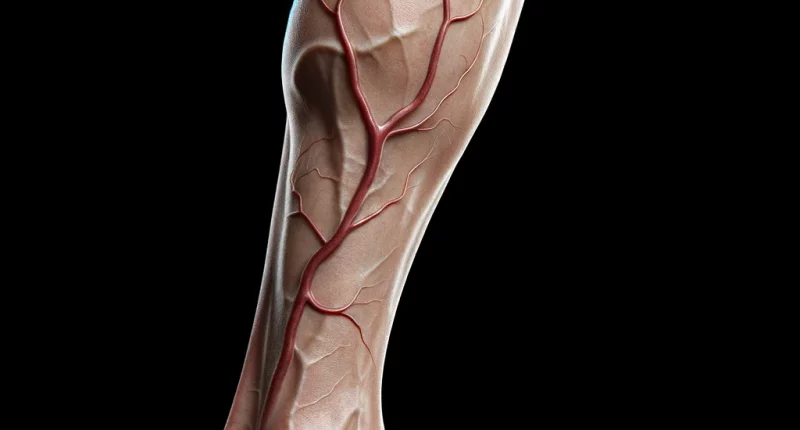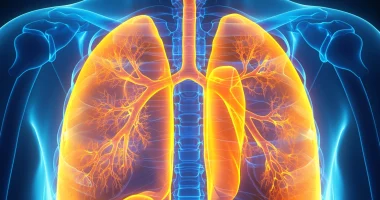Varicose veins
What are varicose veins?
Varicose veins are a pathological condition of the intradermal, communicating, and deep veins, characterized by inflammation, stretching, and deformation of the venous walls. Women have an increased tendency to develop the disease due to pregnancy and lifestyle characteristics. Men are almost five times less likely to suffer from varicose veins than women. The disease is treated by a phlebologist.
Disease
Usually, the outflow of venous blood from the bottom up is presented by the pressure on the tendons and muscles and the pressure difference between different parts of the peripheral circulation. Because of the peculiarities of their structure, the tone of the vein walls is poorly expressed, but it may increase under the influence of signals from the vasomotor center of the brain.
Peripheral circulatory disorders are often caused by a heavy load on the veins of the lower limbs as a result of prolonged standing or sitting, as well as low activity of the muscles in the legs and feet. Overflowing veins lead to their stretching and develop inflammatory changes that cause deformations of the valve device.
Failure of the valves causes blood reflux (backflow), contributing to increased pressure in the superficial and communicating veins. As a result, the vessels are even more stretched and deformed, scarring provokes the formation of varicose nodes that can be seen on the skin. Atrophy of the walls and death of the nerves causes irreversible tonedisorders. The veins become painful, and the lower limbs become unsightly.
Depending on the symptoms, varicose veins occur in several stages:
- Amount of compensation. Pathological changes are detected visually, but the patient has no complaints.
- Subcompensated. There are pronounced pathological changes in the veins. Patients complain of a feeling of heaviness, bursting, cramping, and evening swelling.
- Decompensated. Microcirculatory disorders cause changes in the skin of the legs (dryness, rash, itching, pigmentation).
According to the international classification, the manifestations of varicose veins are divided into categories:
0-No objective symptoms; patient complains of leg pain (heaviness, fatigue, pressure).
- telangiectasias (“spider veins”), enlarged surface vessels formed on the skin.
- an examination of the lower limbs reveals enlarged veins.
- mild to moderate swelling that disappears after rest.
- skin changes such as dryness and hyperpigmentation are observed.
- trophic disorders or traces of a healed wound are present.
- an open trophic ulcer that does not heal for long.
Depending on the stage of disease development, treatment may be carried out using conservative or surgical techniques.
Symptoms of varicose veins
In the early stages, varicose veins in the lower limbs are asymptomatic. Some patients complain of rapid fatigue when walking and heaviness in calves after prolonged standing.
At subcompensated stage blood vessels are seen on the skin in the form of “spider veins”.” More often, enlargement of intradermal vessels is observed in the legs and middle third of the thigh. Possible tenderness along the subcutaneous veins, especially after physical exertion and heat exposure. Patients complain of aching pains, skin sensitivity disorders, and a sensation of goose bumps. In the evening, swelling of the ankle and foot area is noted. There are adverse effects when wearing even ordinary shoes. Leg cramps may occur at night.
At decompensated stage, varicose veins are dilated, and malformed veins are visible. They rise above the skin, tight to the touch. Often, darkening of the skin, cyanosis, or marbling is found in the leg area. Because of circulatory disorders, anhidrosis develops, and the skin dries, cracks, itches, and becomes shiny. Later, the rash appears, and the trophic ulcers form in the spots of active skin cracking.
Causes of varicose veins
The exact cause of the disease has not been confirmed. The pathology is considered polyethiological. There is a direct link between genetically determined defects in connective tissue and the function of upright walking.
Predisposing factors include:
- lack of physical activity;
- sedentary work;
- active sports, lifting heavy weights;
- overweight and obesity;
- pregnancy and childbirth.
Diagnosis of varicose veins
For signs of varicose veins, you should consult a phlebologist. Diagnosis begins by interviewing the patient and collecting complaints and medical history. During a physical examination, objective signs of varicose veins are detected.
A double-sided ultrasound scan of the veins in both limbs is performed to clarify the diagnosis and examine the features of the venous blood supply in the legs. During the examination, the anatomy of the blood vessels, their diameter, location, signs of inflammatory changes, and the presence of a valve malfunction are evaluated. Functional tests are also performed to evaluate the effectiveness of the musculovenous pump, intensity, duration, and source of reflux.
Based on the clinical examination results and instrumental diagnostics, the doctor determines the stage and progression of the disease and prescribes treatment.
Treatment of varicose veins
Conservative and surgical treatment is used depending on the symptoms and the stage of development of the disease. When choosing therapeutic tactics, the doctor considers the condition of the blood vessels and the presence of other diseases in the patient. After surgery, conservative treatment is often prescribed to prevent recurrence.
Conservative methods
Wearing compression stockings is indicated for varicose veins. The degree of compression depends on the clinical situation and is determined individually. It is essential to wear stockings before exercising or walking for long periods.
All patients are prescribed a one medication from phlebotropic drugs. Taking several similar drugs does not increase the effectiveness of the treatment but increases the risk of side effects.
Surgical treatment of varicose veins
“Gold standard” treatment for varicose veins is minimally invasive and endovenous surgery. They allow blood flow to the affected vessels to be stopped and the aesthetics of the lower limbs to be restored. Open surgery (phlebectomy) is performed very rarely – in severe clinical cases when it is impossible to remove the pathology with low-traumatic procedures.
To eliminate varicose veins, the following minimally invasive methods are used:
- Sclerotherapy. It involves the introduction and sclerosing of different drugs into the cavity of a vein. Performed without anesthesia using very thin needles, the procedure takes about 30 minutes. Depending on the number of affected veins, it may take 3 to 10 sessions.
- Radiofrequency ablation. It involves the introduction of a radiofrequency probe into the affected vessel, which has a thermal effect on the venous walls. As a result, the vein cavity closes, and blood flow stops. It is performed throughpunctures under local anesthesia.
- Laser clotting. It involves the closure of a vein by a thermal method using a focused beam of light. It is performed through skin punctures under local anesthesia.
- Glue ablation. A special medical substance has been introduced into pathological vessels, the effect of which is similar to that of glue. The procedure does not require anesthesia.
The advantage of minimally invasive surgical techniques is their low rate of damage, the possibility of using them on an outpatient basis, and the aesthetic results (no scarring).
All these surgical procedures are performed in more than 690 hospitals worldwide. (https://doctor.global/results/diseases/varicose-veins). For example, catheter-directed sclerotherapy can be done in 35 clinics across Germany for approximate price of $1,930. (https://doctor.global/results/europe/germany/all-cities/all-specializations/procedures/catheter-directed-sclerotherapy-cds-unilateral)
Rehabilitation after surgery
When treating varicose veins with non-surgical methods, the patient is advised to have elastic bandaging, wear compression stockings, and walk more. For the next two weeks, it is recommended to refrain from excessive physical exertion, alcohol consumption, and sauna visits.



